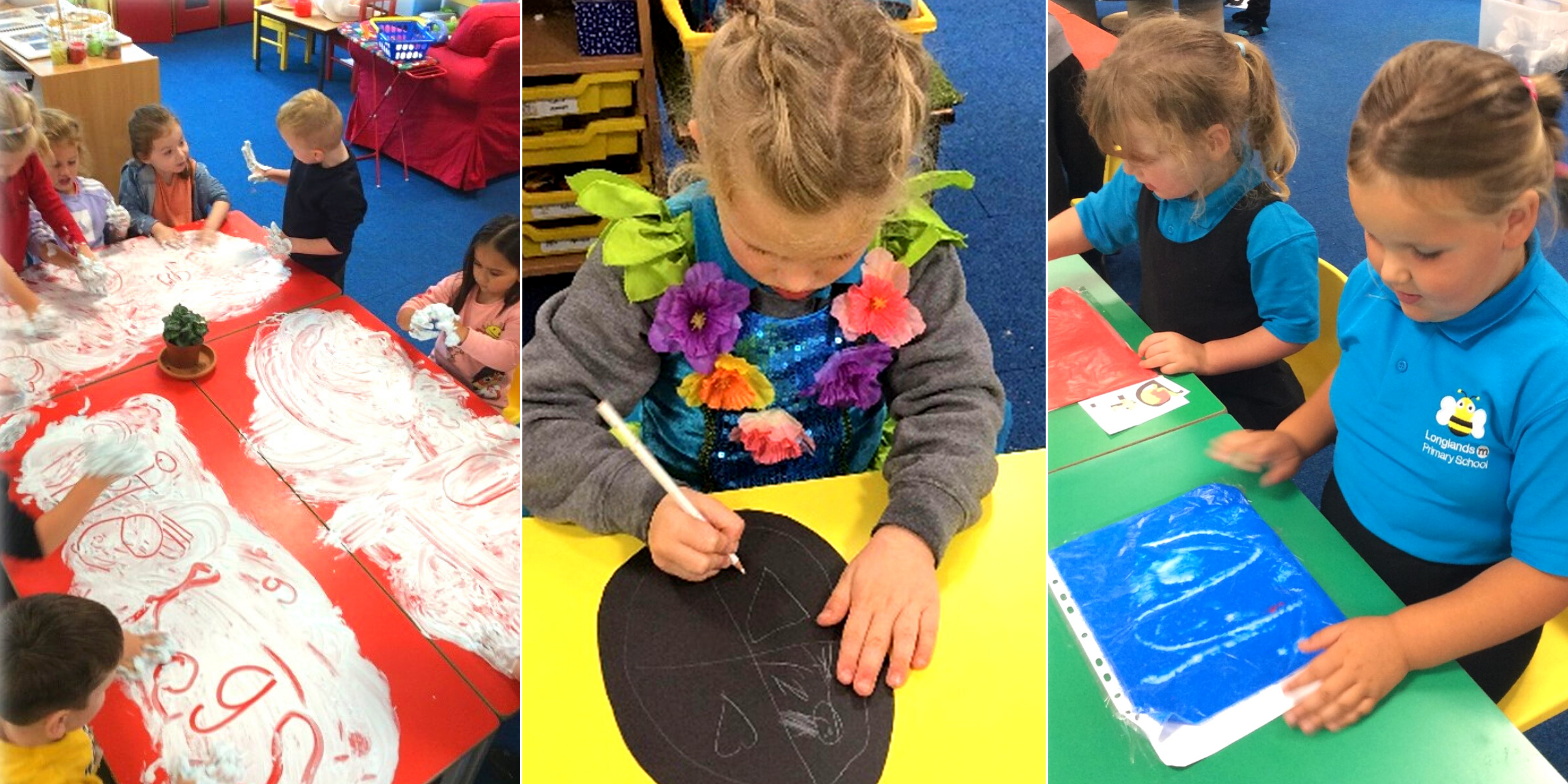Writing at Longlands Primary School
Intent
Our aim is to provide children with key transferrable writing skills to build on year on year, that can be used throughout each phase of their education and prepare them for their life beyond.
We aim to provide the children with varied reasons for writing and provide opportunities for our learners to apply their skills to a range of different contexts.
Oracy is a key part of our writing curriculum in order to build vocabulary for all learners and increase understanding of texts used across our curriculum. Our aim is for all learners to achieve their full potential in writing.
Implementation
Planning follows the National Curriculum and incorporates the ‘Four Purposes for Writing’.
All children; inclusive daily English lessons; questioning and carefully structured tasks and activities deepen children’s understanding throughout the lesson; children who don’t grasp ideas and skills quickly are supported in a variety of ways, e.g. mixed ability coaching, immediate feedback and support from an adult, same day intervention from TA/teacher
Teaching sequence: Teachers are flexible in the approach and order of genres taught, to maximise on the use of cross curricular stimuli for writing. Each teaching sequence will be based on our ‘Writing Journey’ (see attached sheet), which is a progressive sequence which builds to an independent piece of writing.
Our philosophy of learning is that every child has the potential of achieving at the highest standard. To try and achieve this at our school, we ensure that we:
- Use high quality, rich and engaging texts as a basis for learning
- Build on prior learning as well as revisiting basic skills;
- Have a clear purpose and context for outcomes where appropriate;
- Explore and investigating vocabulary through high quality texts as models;
- Build on, deepening the understanding of and applying key grammatical concepts through discrete grammar and skills lessons;
- Promote the ‘art’ and process of writing: drafting, redrafting and editing
- Allow the children to see adults as writers, through effective modelling and ‘thinking out loud’
- Give the children an audience for their writing
Impact
Assessment for learning – peer assessment is used in lessons where children are encouraged to listen and critic other children’s responses; teacher and children’s questioning is used to extend children’s thinking as well as find out what children know and understand addresses misconceptions by highlighting them through direct teaching; this also helps teachers at each stage identify and redress any child who is being left behind.
Termly assessments based on independent written outcomes – assessment criteria to be used to support teacher assessment and for formative assessment (see attached sheets) – Primary Writing Assessment Grids.

Writing at Longlands Primary School

